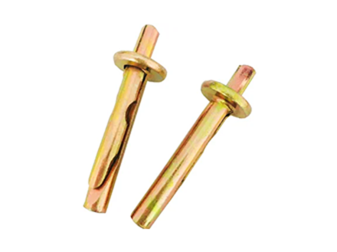Nov . 11, 2024 07:00 Back to list
wedge anchor fastener
Exploring the Wedge Anchor Fastener A Comprehensive Overview
Wedge anchor fasteners are essential components in the construction and engineering industries, celebrated for their reliability and strength when anchoring objects in concrete. This article delves into the properties, installation procedures, advantages, and applications of wedge anchor fasteners, providing a rounded perspective on this crucial tool.
What is a Wedge Anchor?
A wedge anchor is a type of heavy-duty expansion anchor specifically designed for use in concrete, whether it be poured, precast, or precast-post tensioned concrete. Its design typically includes a threaded rod or bolt, a wedge-shaped component, and a nut. When installed, the wedge anchor creates a strong mechanical bond with the concrete substrate, making it ideal for securing heavy fixtures and equipment.
Key Properties and Features
The effectiveness of wedge anchors can be attributed to several key characteristics
1. Material Composition Wedge anchors can be manufactured from various materials, such as carbon steel, stainless steel, or zinc-coated steel, offering options for different environments and corrosion resistances.
2. Load Capacity Depending on dimensions and materials, wedge anchors can support substantial load capacities, making them suitable for both tensile and shear loads.
3. Expansion Mechanism The unique wedge design allows for a secure grip on the concrete. As the bolt is tightened, the wedge presses against the sides of the drilled hole, anchoring the fastener in place.
4. Versatility With different lengths and diameters available, wedge anchors can be tailored to a range of applications, from light-duty tasks to securing structural elements.
Installation Process
The ease of installation is one of the notable advantages of wedge anchors
. The following steps outline the general installation procedure1. Select the Correct Anchor Choose an appropriate size and type of wedge anchor based on the application, load requirements, and concrete specifications.
wedge anchor fastener

2. Drill the Hole Using a hammer drill, create a hole in the concrete that matches the diameter and depth recommended for the chosen wedge anchor.
3. Clean the Hole Before insertion, it’s crucial to clean the hole of dust and debris to ensure proper anchoring.
4. Insert the Anchor Place the wedge anchor through the fixture and into the drilled hole, ensuring it is seated properly.
5. Tighten the Anchor Using a wrench, tighten the nut on the wedge anchor. As you do so, the wedge expands, creating a snug fit within the concrete.
6. Verification After installation, check that the anchor is secure and capable of bearing the intended load.
Advantages of Wedge Anchors
Wedge anchors offer numerous advantages over other types of fastening systems, including
- High Load Capacity They can handle significant loads, which makes them exceptionally durable for heavy-duty applications. - Robustness Their expansion mechanism provides a strong and stable hold, minimizing the risks of loosening over time. - Quick Installation The straightforward installation process, requiring no special tools beyond a standard wrench and hammer drill, makes them user-friendly. - Versatile Applications Wedge anchors are applicable in a wide range of settings from residential to industrial, including securing machinery, electrical equipment, and structural components.
Applications
The versatility of wedge anchors allows for diverse applications across various sectors. Common uses include
- Construction Projects Anchoring structural steel components, frameworks, and machinery. - Signage and Lighting Securing outdoor signage and lighting fixtures in place. - Concrete Repairs Using them as part of repair systems for concrete structures.
Conclusion
Wedge anchor fasteners are a robust, reliable, and versatile solution for anchoring in concrete applications. Their substantial load-bearing capacity and straightforward installation procedures make them a favored choice for professionals in construction and engineering. By understanding the properties, installation, and applications of wedge anchors, stakeholders can utilize these fasteners effectively, ensuring safety and stability in their projects.


